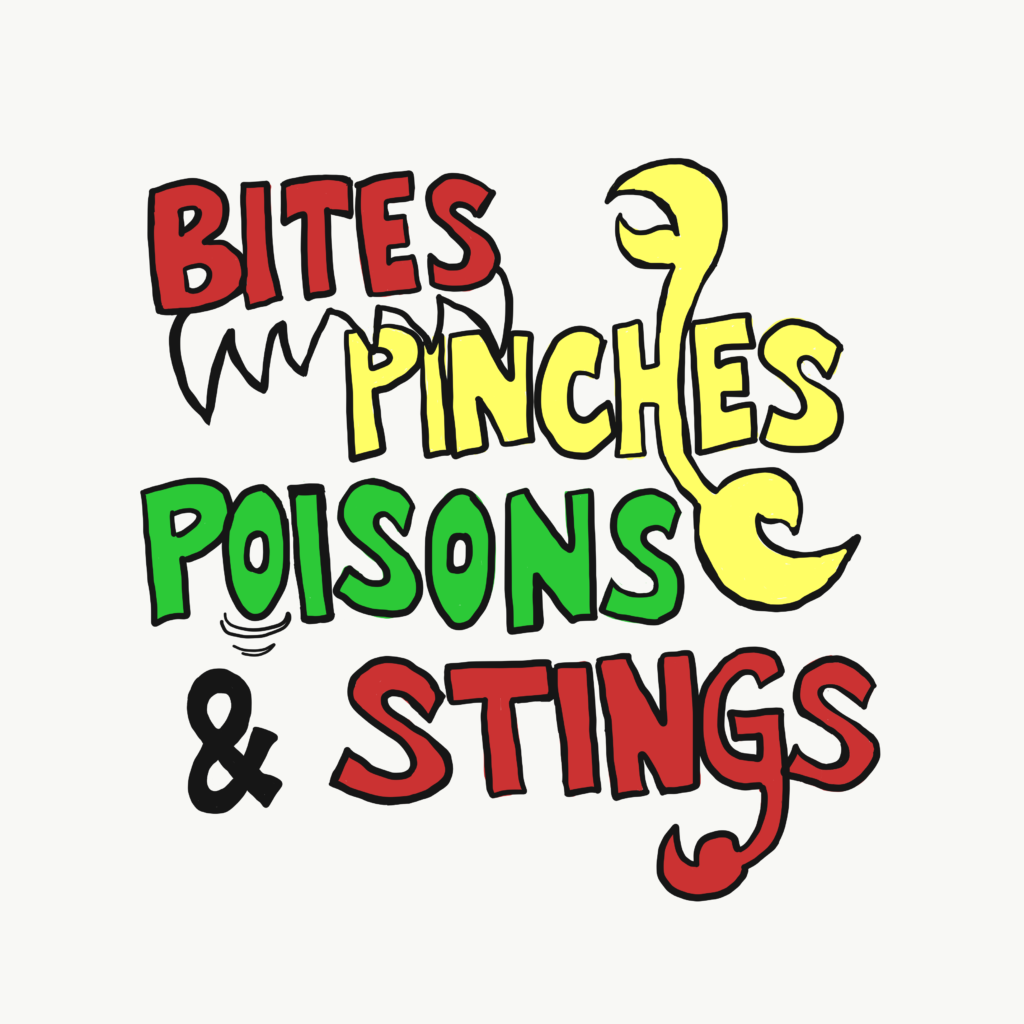There are around 30 species of rattlesnakes found in the United States. A rattlesnake is a New World (North American) viper characterized by the segmented “rattle” found at the end of its tail. These rattles are made of keratin, the same protein that makes up human hair and nails. Every time a rattlesnake sheds, the rattle gains a new segment. When a rattlesnake is startled, it may rattle its tail as a warning, resulting is a loud buzzing sound. A common my this that a person can tell a rattlesnake’s age by the number of segments on its rattle–this is not true. Rattlesnakes often lose and regrow segments throughout their lives.
Rattlesnake venom is necrotic, meaning it attacks and kills tissues. It is also hemotoxic, meaning it attacks blood cells. Certain rattlesnakes have neurotoxic venom, which attacks the nervous system. Rattlesnakes are ambush predators, relying on surprise attacks to capture prey. Venom aids in this process by stunning prey, allowing the rattlesnake to consume it.
Rattlesnake venom is also used in medical science to aid humans. It is an anticoagulant, meaning it prevents blood from clotting, so many blood thinning medications contain rattlesnake venom. These medications are vital for people at risk of a sudden heart attack.
Rattlesnakes typically feed on small rodents, birds, and other reptiles and amphibians. Small heat sensing organs, referred to as “pits”, allow the rattlesnake to sense nearby prey. Because they eat rodents, rattlesnakes also help control disease and rodent populations. If left unchecked, rodents will quickly overpopulate, enter homes, and contaminate food supplies. Vipers, non-venomous snakes, and birds of prey are critical to population control.
Vipers may appear scary, but like every animal, they serve a purpose. Learn more about vipers in Anniston Museum of Natural History’s temporary exhibit, Bites, Pinches, Poisons, and Stings. The last day to visit this exhibit is Sunday, July 11, so visit while you still can and Explore Your World with us!

